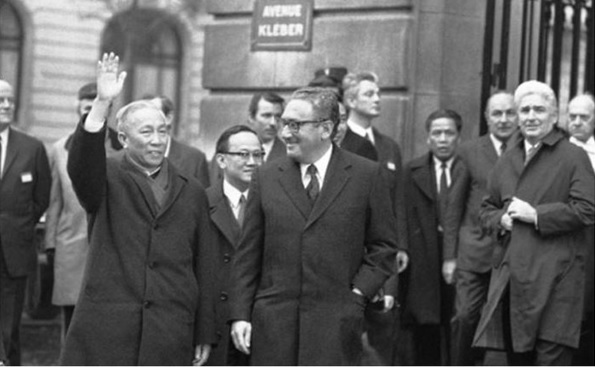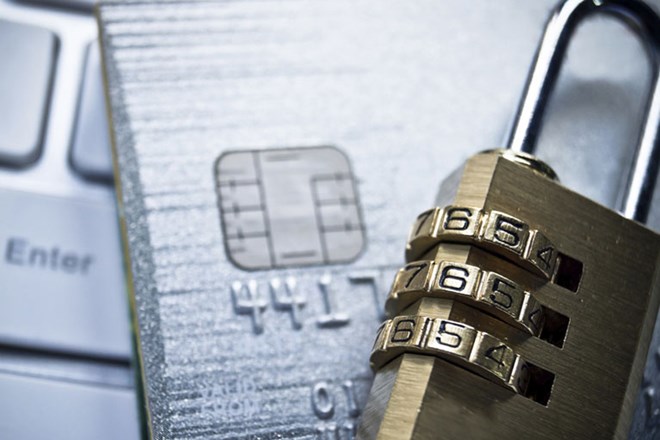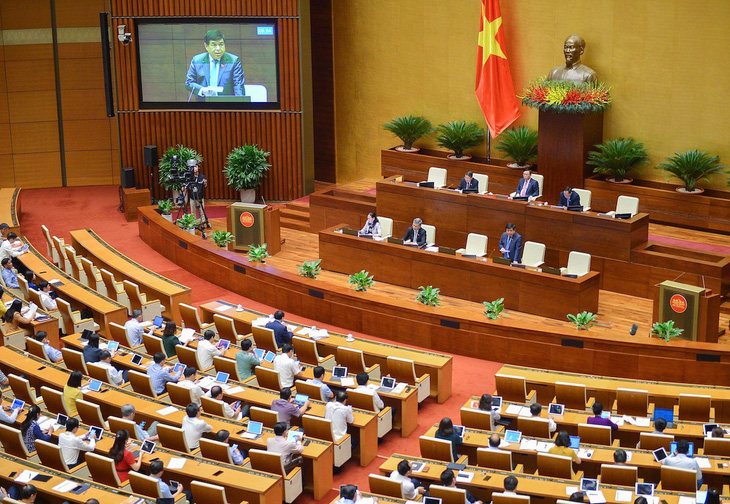您现在的位置是:88Point > Ngoại Hạng Anh
【lịch bóng đá europa league】Paris Peace Accords: lessons on independence, self
88Point2025-01-24 22:18:54【Ngoại Hạng Anh】2人已围观
简介Paris Peace Accords: lessons on independence, self-reliance and international solidarityJanuary lịch bóng đá europa league
Paris lịch bóng đá europa leaguePeace Accords: lessons on independence, self-reliance and international solidarity
January 28, 2023 - 09:35Việt Nam’s anti-American resistance war, national liberation fight and negotiations at the Paris Conference took place in a very complicated historical context. It was at a time when the system of the socialist countries had taken shape and grew stronger and stronger, actively helping the world revolutionary movement, including the Vietnamese revolution.
 |
| Henry A. Kissinger and Lê Đức Thọ after the signing of the Paris Agreement. — VNA/VNS Photo |
HÀ NỘI — The signing of the Paris Agreement on Ending the War and Restoring Peace in Viet Nam, also known as the Paris Peace Accords, on January 27, 1973, was a resounding victory for Việt Nam’s revolutionary diplomacy in the Hồ Chí Minh era, making important contributions to the common victory of the whole nation and, at the same time, leaving invaluable diplomatic lessons, including those related to national independence and international solidarity.
Việt Nam’s anti-American resistance war, national liberation fight and negotiations at the Paris Conference took place in a very complicated historical context. It was at a time when the system of the socialist countries had taken shape and grew stronger and stronger, actively helping the world revolutionary movement, including the Vietnamese revolution.
But within the socialist bloc, there were different views on the way to build socialism and fight for national liberation, and even sharp conflicts arose. On the other hand, the enemy of the Vietnamese people was the US imperialists with strong economic and military potential.
With lessons from the anti-French resistance war, the Central Committee of the Việt Nam Workers' Party upheld the spirit of independence, self-reliance and international solidarity in both resistance and negotiation guidelines. These were the two basic guiding points that ran through the negotiations at the Paris Conference from the beginning to the end.
From 1965 to the end of 1966, the US imperialists escalated the aggression war against Vietnam. They made the "fake peace" argument, asking the Government of the Democratic Republic of Vietnam to sit down for negotiations.
In January 1967, the 13th conference of the Central Committee of the Party decided to open a new diplomatic front to more strongly denounce the crimes of the US imperialists and expose their peace tricks, uphold the righteous stance of the revolution, and take advantage of the sympathy, support and assistance of the socialist countries and progressive people around the world, including the Americans.
In 1968 spring, the Vietnamese army and people launched a general offensive and uprising throughout the southern battlefield (with urban areas as the main direction), forcing the administration of US President Lyndon B. Johnson to de-escalate the war and agree to sit at the negotiating table with Việt Nam at the Paris Peace Conference.
On May 13, 1968, the official negotiations between a delegation of the Government of the Democratic Republic of Việt Nam and that of the US Government began in Paris, marking a new phase in the war. Việt Nam officially competed on both battlefield and the diplomatic front with the motto "fight and talk at the same time".
Việt Nam steadfastly required the US to cease its bombing raids unconditionally and all other war activities against the Democratic Republic of Việt Nam, while other relevant issues of the two sides would be discussed later. Meanwhile, the US side demanded that the North withdraw its troops and stop sending people and reinforcements to the South.
Conscious of Việt Nam’s righteous stance and resolute attitude and, at the same time, difficulties and losses on the battlefield, the movement against the war in the US increased.
On November 1, 1968, US President Johnson was forced to declare an end to all acts of war against the north of Việt Nam. Following the event, the struggle between Việt Nam and the US began revolving around the format and the conference participants. It agreed to organise a four-party conference, including the Democratic Republic of Việt Nam, the National Front for the Liberation of the South (then the Provisional Revolutionary Government of the Republic of South Việt Nam), the US, and the Republic of Việt Nam (Saigon administration).
Taking the initiative to step into the "fight and talk" situation was thanks to the great creativity of the Vietnamese Party, demonstrating independence and self-reliance in terms of policymaking.
In 1969, Richard Nixon was elected as President of the US. He proposed a strategy known as "Vietnamisation" of the war, under which the expeditionary troops and those of some allied countries gradually withdrew. The army of the Republic of Việt Nam served as the main combatants. However, the US still commanded it through a contingent of military advisors and the provision of capital, technical weapons and means of war.
On January 25, 1969, the four-party Conference on Việt Nam officially convened its first session. During the negotiations, the Vietnamese struggled in all aspects of the war. Still, it focused on the two most important issues, namely demanding the withdrawal of all US and allied troops from the South and their respect for the basic national rights and self-determination rights of the people of South Việt Nam. Many governments around the world supported the demand.
The world believed that the Vietnamese side had shown goodwill for peace, demanding the US government end the aggression war against Việt Nam. At the Paris Peace Conference, Việt Nam took advantage of public forums with official and insightful speeches to win over public opinion.
The Vietnamese side also attached great importance to press mobilisation. During the nearly five years of negotiations, the Paris Peace Conference held nearly 500 press briefings, seeing them as invaluable opportunities to denounce the stubbornness of the US and the Saigon administration and, at the same time, hold up the peace and goodwill stance of Việt Nam, actively contributing to the great solidarity of the world people's front in support of the Vietnamese revolution, and strongly isolating the US - Saigon administration on the international arena.
The great military victories of the Vietnamese revolution on the battlefield (Route 9 – Southern Laos Campaign 1971, Easter Offensive 1972) resulted in heavy losses to the enemy, step by step thwarting the US strategy of "Vietnamisation" of the war, and creating advantages for Vietnam at the negotiating table.
Unable to shake Việt Nam’s position at the negotiating table, Nixon intensified military actions on the battlefield. On December 14, 1972, he approved a plan to launch strategic air raids, mainly using B-52 strategic aircraft, on Hà Nội and Hải Phòng.
With the airstrikes, the US wanted to win military victories and create strength in the negotiations at the Paris Conference, forcing the Government of the Democratic Republic of Việt Nam to sign an agreement to end the war and destroy the economic potential and defence forces of North Việt Nam, especially making big cities unable to support the resistance war in the South. Moreover, the airstrikes were expected to offer more time to the army and administration of Saigon to strengthen their forces and cause panic among the Vietnamese. The US wanted to rattle its military power to the world through unprecedented strategic raids and devastating destruction and deter countries struggling against imperialism.
The Paris Peace Conference (1968 - 1973) has gone down in the history of the Vietnamese nation in general, and the Vietnamese revolutionary diplomacy of the Hồ Chí Minh era is a hallmark that never fades. Celebrating the 50th anniversary of the signing of the Paris Peace Agreement (January 27), Việt Nam is more deeply aware of the significance of this special historical document. Many lessons have been learned from the historical negotiations, in which the lesson on upholding the spirit of independence and international solidarity still holds profound theoretical and practical values.
Box: From December 18-29, 1972, the US launched strategic air raids (mainly by B-52 bombers) on Hà Nội and Hải Phòng, but they were a complete failure. The North Vietnamese air defence forces shot down 81 aircraft of all kinds (including 34 B-52s), forcing the US and the Saigon administration to sign an agreement to end the war (January 27, 1973). The US and other countries committed to respecting the independence, sovereignty, unity and territorial integrity of Việt Nam, withdrawing all expeditionary troops and troops of allied countries, and destroying all US military bases. They pledged not to continue military involvement or interfere in the internal affairs of South Vietnam. The parties let the people of the South determine their own political future through free general elections; recognised the actual status quo in South Việt Nam with two governments, two armies, two regions of control and three political forces; ceased fire on the spot; and swapped prisoners and captured civilians. With the Paris Agreement, Việt Nam "beat the US out" and created favourable conditions for the complete liberation of the South and national reunification in the spring of 1975. — VNS
很赞哦!(11)
相关文章
- Nhận định, soi kèo Schalke 04 vs FC Aarau, 19h00 ngày 6/1: Tưng bừng bàn thắng
- Cử tri bức xúc trước vấn nạn tín dụng đen
- Đẩy mạnh tuyên truyền về đại hội đảng bộ các cấp
- Quốc hội nghị sự nhiều nội dung quan trọng trong tuần họp thứ hai
- Nhận định, soi kèo Al Nasr vs Al Arabi, 21h35 ngày 6/1: Khó tin chủ nhà
- Sớm khắc phục những khó khăn làm chậm tiến độ giải ngân vốn lĩnh vực nông nghiệp
- Tăng cường kiểm tra, kiểm soát thị trường dịp Tết Trung thu
- Thành phố Ngã Bảy: Trên 10.500 mô hình tiêu biểu gia đình học tập
- Những cuốn sách về doanh nhân, doanh nghiệp đáng chú ý
- Hơn 30 đại biểu tham dự hội thảo khoa học về khởi nghiệp
热门文章
站长推荐

Apple làm thế nào để trở thành ông lớn trong làng công nghệ

38 cá nhân và tập thể đạt giải tại Hội thi “Tin học trẻ” lần thứ XVII

Thực tập chữa cháy tại Công ty TNHH Giấy Lee&Man Việt Nam

Đối thoại với công dân huyện Châu Thành

Quá nửa người dùng Việt Nam lo lắng về lừa đảo ngân hàng trực tuyến
.gif)
Công ty TNHH Suntory Pepsico Việt Nam chào xã giao lãnh đạo tỉnh Long An

Không lấy phiếu tín nhiệm với lãnh đạo nghỉ chữa bệnh hiểm nghèo là nhân văn

Ra mắt phòng truyền thống Đảng bộ huyện Phụng Hiệp
友情链接
- Việt Nam, RoK strengthen anti
- Wartime bomb safely detonated in Quảng Bình
- Việt Nam, RoK strengthen anti
- PM asks Quảng Bình to tap into distinctive potential, advantages
- Foreign leaders extend congratulations to newly
- Việt Nam strongly condemns genocide crime: Ambassador
- Foreign leaders congratulate newly
- Việt Nam regards Japan as important, long
- Deputy PM meets Cambodian, Singaporean counterparts in Tokyo
- Two more public security officers sent to UN peacekeeping operations